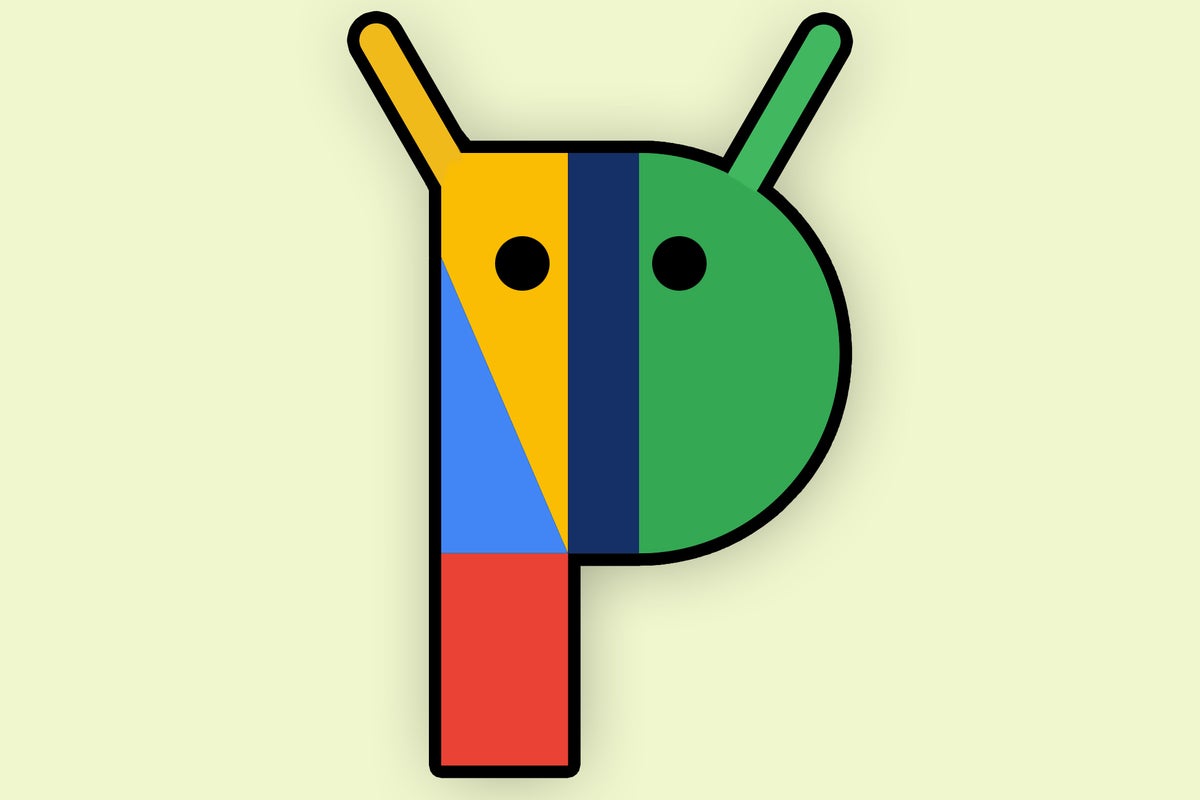Talk to most Android enthusiasts about their current causes of excitement, and odds are, the Pixel 6a won't be high on the list.
It's no wonder, really: The Pixel 6a — Google's upcoming midrange phone model, which signs increasingly suggest should be landing around the time of the company's I/O developers' conference in May — will almost certainly just be a lower-end equivalent of the more premium Pixel 6 flagship that came out last fall.
And hey, the higher-end flagship phones are where all the truly exciting stuff happens — right? Especially at a time when pretty much every device-maker seems to be working on whiz-bang gizmos that bend, fold, and occasionally perform jaunty little jigs for your amusement, a decidedly mundane midrange model is hardly cause for exhilaration. RIGHT?!
Well, kind of — in a sense. But hold the phone: There's more to this story than you see on the surface. While the Pixel 6a will undoubtedly lack the flash and pizazz of its costlier cousins, appearances can be deceiving. And here in the land o' Android, it's often the least exciting announcements that end up being the most important from a bigger-picture perspective.
Allow me to explain.
Pixel perspective
Before we get to the present and Google's current Pixel ambitions, we need to rewind a bit in our geeky Googley history.
We're zoomin' back all the way to the prehistoric time of 2013, in fact — a year when Google's actual inaugural homemade Android phone made its way into the world.
That phone was none other than the original Moto X. It feels like an eternity ago now, I realize, but remember: Google owned Motorola in that era. And the 2013 Moto X was our first glimpse at what a phone fully made by Google, from start to finish, would shape up to be.
Goodness, was it something. That first Moto X was the rare Android gadget that shunned the then-standard focus on specs for the sake of specs and instead emphasized an exceptional all-around user experience — one that added thoughtful and genuinely valuable features into the existing Android framework without just arbitrarily changing things around for the very sake of change.
Some of those features continue to influence how we use our phones today. That first Moto X introduced the notion of always-on voice activation, for instance — long before Google Assistant was even a thing. It had an early version of Android's now-standard always-on display system along with one of the platform's first automatic driving detection options. And all of that was just the start.
And yet, in spite of all its positives and the ample critical praise around 'em, the Moto X was, by most counts, a commercial dud. It earned lots of geek lust, without a doubt — but one thing it never managed to earn was oodles of money for Motorola. Plain and simple, the phone was a flop.
Four months later that same year, Motorola held an understated event in Brazil to announce another Google-made device. This second event lacked the glitz and the glamour of the Moto X launch, and it didn't even involve the U.S. or other major markets. Its focus was a little somethin' called the Moto G — a decidedly dull device that was basically just a lower-end, less flashy version of the Moto X flagship.
There wasn't much exciting about the Moto G. It had a plain, muted appearance, ho-hum specs, and none of the fancy features or eye-catching designs of its pricier X-branded sibling. And yet, it followed the same basic design language as its higher-end equivalent and packed all the same core concepts into a package that was practically half the price — $180 for a brand spankin' new Moto G, compared to $380 (which, yes, seemed like a lot at the time) for the prettier and pricier Moto X.
Do you remember what happened from there? No one made much of a fuss over the Moto G. It wasn't buzzworthy, it wasn't the subject of endless hype and excitement, and it certainly wasn't anything to write home about. What it was, though, was an incredibly solid and high-quality experience in an impossibly affordable form. And as its availability spread into more areas, it quickly turned into a massive hit — a device credited with single-handedly "resurrecting" Motorola, driving record phone sales across the globe, and eventually becoming the company's best-selling smartphone and its blueprint for the future.
And that brings us back to the present and what we're seeing play out with Google's Pixel devices right now.
The Pixel 6a potential
From the get-go, Google's Pixel phones have won the adulation of experience-focused Android nerds — including certain lowly (but extraordinarily handsome) Android column writers. Pixels are the only phones I wholeheartedly recommend for most folks these days, in fact, as the overall user experience with 'em is just in such a different league from anything else out there.
Factor in the devices' singular software update promise and all of their privacy and security advantages, and there's plenty of praise to be sung for what a Pixel provides — particularly from the perspective of a business-minded phone owner.
And yet, the best-in-class Pixel flagships have never been huge sellers. Blame marketing, blame availability, or blame any other number of Google-associated variables, but the vast majority of Android-using organizations and organisms remain woefully unaware of what Pixel phones even are and how they differ from the more known and established Android brand(s).
The one area where Google's seen some manner of meaningful commercial success is in the midrange realm — with its Pixel "a" line of devices. But the most recent Pixel "a" phone, the Pixel 5a, sells for $450. With the high-end Pixel 6 flagship of the moment costing only a cool 600 smackers, $450 suddenly doesn't seem like such a bargain anymore.
Now let's zoom out even further to look at the broader smartphone picture at this particular moment. The Pixel 6's price represented a notable drop from the cost of its Pixel flagship predecessor, the $700 Pixel 5 — which itself came down a hundred bucks from the previous-gen Pixel flagship, the $800 Pixel 4.
The Pixel 6 also included a longer-than-ever software support window — with three years of guaranteed timely OS updates and five years of monthly security patches. That actually made the phone cost less per year of advisable ownership than the significantly cheaper Pixel 5a, which is a pretty crazy disconnect to consider.
Much of the Pixel 6's progress with both price and support life ties into the fact that it's the first Pixel phone to be powered by Google's own homemade processor — a shift that opens the door to both cost savings, from Google's perspective, and the ability to provide longer support without the prickly reliance on a third-party component-maker.
All signs suggest the Pixel 6a will follow that same pattern and bring a Google-made processor into the midrange Pixel realm — which means we should, in theory, see both a lower price and a longer support window for the phone. And especially with the disconnect between the Pixel 6 and the Pixel 5a in terms of value, that'd be a pair of very welcome corrections.
Now consider this: According to a recent analysis, the top-selling Android phone of 2021 wasn't a flashy flagship or a device most of us have probably even given an ounce of thought to. Nope — it was the Samsung Galaxy A12, a budget-level phone you can buy almost anywhere for 180 bucks.
The Galaxy A12 is, to use the technical term, terrible. It's everything we've come to expect from budget-level Android devices over the years, with a potato-quality camera and a screen comparable in quality to gently warmed garbage. That's to say nothing of the slow and clunky performance and operating system updates that arrive half a year late — if you're lucky. It's a phone that's "aging ungracefully," as one recent review put it, and that might be being generous.
And yet, that crappy ol' clunker outsold every other Android phone in 2021. Wild, ain't it?
The take-home message here is simple: In the Android budget arena, the bar is almost laughably low. It wouldn't take much for a phone to absolutely shatter the current ceiling and offer an experience so many times above the present expectation that it'd be a total no-brainer for even the most penny-pinching business to buy — from camera quality and other hardware basics to timely software support that'd keep the phone up-to-date, secure, and fully advisable to use for a significantly longer period than what's presently possible at that price point.
Oh, and one more thing: Samsung's current Galaxy A12 successor, the Galaxy A13 5G, costs $250. That's well within the Pixel 6a's striking range. Even if the Pixel 6a sells for $350, its superior-in-every-way experience and likely much longer window of active ongoing support would make that an easy step-up decision for any value-minded buyer — provided, of course, that Google manages to market those advantages effectively and communicate the importance of long-term smartphone math.
Ultimately, I still suspect an even more affordable Pixel "b" line phone is inevitable at some point. But the Pixel 6a should represent a significant step in that direction — and an overdue redefining of what a midrange Android phone can be.
Just like the Moto G launch did for Motorola way back when, the Pixel 6a's arrival could be the moment that puts Pixels on the map — that brings Google's Android philosophy to the masses, helps turn the company into a serious smartphone player, and ultimately forces other device-makers to keep up with the level of quality and longevity it's offering at that price.
And that, suffice it to say, could easily end up being the biggest Android story of the year — even if it isn't exactly exciting.
Don't let yourself miss an ounce of Pixel magic. Sign up for my free Pixel Academy e-course to discover tons of hidden features and time-saving tricks for your favorite Pixel phone.













































